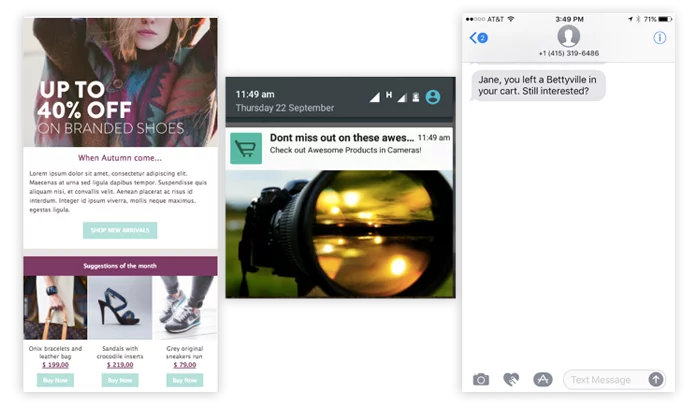Iterable was built to solve email personalization challenges, but consumer expectations have grown far beyond the inbox. In order to be successful, today’s marketer needs to be just as savvy when it comes to mobile, apps, social profiles, and more.
Blueshift’s customer record doesn’t have a single primary key, but can be created and executed against any of the following keys: email, phone, device UUID, customer_id and Blueshift’s anonymous_id. This means clients can execute personalized messages to all of their customers, both known and unknown. For example, in Blueshift you can send mobile push messages to anyone that has a device UUID — and that’s it. There’s no need for an email address or customer id. Meanwhile, Iterable’s current documentation states the inability to send mobile push notifications, SMS, web-push, or the like to anyone without an email, as email is a required field.
Blueshift also stores behavioral data related to anonymous profiles so you don’t lose valuable data insights just because someone hasn’t signed in yet. Once there’s an identifiable event (email, phone, customer_id, etc), Blueshift combines all the anonymous data into a single identifiable user profile.





